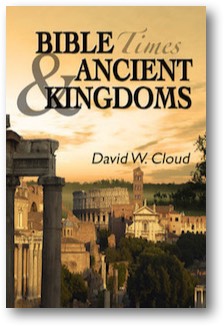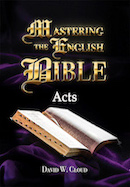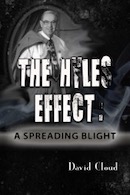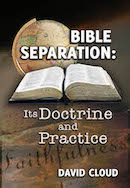866-295-4143, fbns@wayoflife.org

The following is excerpted from the 2020 edition of Bible Times & Ancient Kingdoms, available from www.wayoflfe.org. The 700-page book is accompanied 26 PowerPoints packed with 5,600 high quality color photos, drawings, historic recreations, and video clips. The PowerPoint on Bible Plants, which includes the studies on trees, has 264 slides.
Fig
The fig is mentioned 51 times in the Bible.
Adam and Eve covered themselves with fig leaves (Ge. 3:7).
Egypt cultivated figs (Ps. 105:33).
The Promised Land was a land of fig trees (De. 8:8).
It was common for families to grow figs (1 Ki. 4:25).
Israel is likened to a fig tree planted by God (Lu. 13:6-9).
Nathanael was under a fig tree when Philip called him to see Jesus - (Joh. 1:48).
Figs will be cultivated in Christ’s kingdom (Joe. 2:22; Mic. 4:4; Zec. 3:10).
The biblical fig is the Ficus carica, which is native to Western Asia but is grown commercially throughout the world.
It is a deciduous tree that grows to a height of 23-33 feet (7-10 m). The fragrant leaves are 5-10 inches long and 4-7 inches wide and are deeply lobed with three or five lobes.
It is a beautiful tree with white bark and multiple trunks that form a great variety of habits or forms. As the tree ages, the thick trunks and the above-ground roots are intertwined to form beautiful shapes.
It is pollinated by a fig wasp, which is the only creature capable of pollinating this tree. There are more than 700 species of figs and each has its own specialized wasp. The tree bears two types of fruit, one (the caprifig) is capable of being pollinated for reproduction of the tree; the other is female and is the edible fruit. The female wasp crawls inside the caprifig through a tiny hole (the ostiole), lays her eggs and dies. After the offspring hatch, the males mate with the females, then dig tunnels out of the fruit and die. The females, covered in fig pollen, crawl out of the tunnels and fly off to repeat the cycle. This is one of the myriad of symbiotic relationships in nature. The wasp provides the tree with pollination services, while the tree provides the wasp with a safe environment for reproduction.
Evolutionists claim that the wasp-fig wasp symbiosis is an example of “co-evolution,” but if so it means that these two complex living things “evolved” at exactly the same time with full-blown capabilities. That sounds more like creation to me! The idea of “co-evolution” is an evolutionary “Just So” story that attempts to explain away the complexity of creation, but it is a fairy tale. Evolutionists have never proposed a creative mechanism that could produce complex living creatures. Natural selection is not creative but genetically selective, and mutations are overwhelmingly destructive and do not build up information to the creature’s genome in a creative way.
Another type of Ficus, the Ficus sycomorus is called the sycomore. It is the Egyptian fig-mulberry. It is the tree that Zacchaeus climbed Zacchaeus climbed in Jericho (Lu. 19:1-4).. (See PowerPoint 02 - Sycomore.)
Olive
The olive, which is mentioned more than 50 times in the Bible, was a major part of Israel’s agriculture in ancient times and continues to be so today.
The olive tree is used in Scripture as a symbol for fruitfulness, prosperity, and beauty.
“like a green olive tree in the house of God” (Ps. 52:8)
“thy children like olive plants round about thy table” (Ps. 128:3)
“fair, and of goodly fruit” (Jer. 11:16)
“His branches shall spread, and his beauty shall be as the olive tree” (Ho. 14:65)
The Hebrew words for olive tree are “zayith” (De. 6:11) and “shemen” (1 Ki. 6:31), both of which refer the tree’s oil.
The olive tree is native to Syria and Canaan, where growing conditions are often ideal. It can flourish in rocky ground with little topsoil. It likes cool winters (a mean temperature of 45-47 degrees F being ideal) and hot summers. Without a proper winter chilling, the olive doesn’t flower. “The terraced hills of Palestine, where the earth lies never many inches above the limestone rocks, the long rainless summer of unbroken sunshine, and the heavy dews of the autumn afford conditions which are extraordinarily favorable to at least the indigenous olive” (International Standard Bible Encyclopedia).
As for beauty, the olive tree does not have the striking natural beauty of a fir or cedar or maple or many other types of trees. On my first visits to Turkey and the Middle East, I was disappointed at the olive’s scraggly appearance. My first impression was to agree with Louis Figuier, “The olive is of a sober grayish green aspect and without beauty, having a rugged stunted aspect” (Vegetable World). But I have found that the olive tree has its own beauty and fascination for the careful observer.
There is beauty in the olive’s very asymmetry: its twists and turns, its protuberances and knots. Like God’s people, each olive tree is a perfectly unique individual. As Charles Spurgeon observed,
“You must look and look again! And then, if you do not at last feel a deep respect for the olive, and a quiet delight in its beauty, it must be because you are not of a thoughtful spirit, or else because you have little poetry in your soul. The more familiar you become with the olive tree, the more you will take pleasure in it” (“The Beauty of the Olive Tree,” Dec. 16, 1909).
There is beauty in the grayish, silverish green color of the olive leaves (being more silvery on the underside). It has a unique light-reflecting quality.
God colored most vegetation green to rest man’s eyes, but there are myriad shades of green for variety and delight.
There is beauty in the olive tree’s flowering. In about May, it is covered with clusters of small, star-shaped white flowers.
When they first appear, the olives are green and gradually turn black as they ripen.
The olive tree’s chief beauty lies in its fruitfulness. In the parable in Judges 9, the olive tree says, “Should I leave my fatness, wherewith by me they honour God and man...? (Jg. 9:9). The fatness refers to the tree’s oil and to all other aspects of its valuable products.
One olive tree produces an average of about 50 kilos (110 pounds) of fruit annually. That is about 1,250 olives, though they vary greatly in size.
Large olive trees that haven’t been pruned can reach 40 to 50 feet high and can produce 800 kilos annually.
But for commercial purposes, the trees are pruned to facilitate harvesting from the ground.
The olive can continue to bear fruit for 3,000 years and more. There is a 3,000-year-old tree in Crete that still bears fruit.
The Greek poet Homer called olive oil “liquid oil.”
The olive is used for food, cooking oil, medicine, soap, fuel (pomace), and cosmetics. In ancient times. the olive oil was used in lamps. Olive oil was used extensively in the Levitical worship system. It was used to light the candlestick (Ex. 25:6), anoint the priests (Ex. 29:7), anoint the offerings (Le. 8:26), mingle with the offerings (Ex. 29:1-2), cleanse lepers (Le. 14:10).
The olive tree’s wood is also valuable. It is hard and has interesting patterns. It was used in Solomon’s temple for the carvings of the cherubim (1Ki. 6:23), the posts (1 Ki. 6:33), and the doors to the oracle (1 KI. 6:31).
To gather the ripe olives, the tree is beaten with rods, and the law of Moses required that some fruit be left for the poor (De. 24:20).
There were already great groves of olives in Canaan when Israel entered (De. 6:10-11; 8:7-8; Jos. 24:13).
King David had groves of olives in the plains (1 Ch. 27:28).
Great numbers of olive trees have been planted in Israel since the 20th century. Today, the focus is on planting in the Negev desert.
It was on the Mount of Olives that Jesus prayed before His arrest (John 8:1). This mount is still covered with many olive trees today.
We saw ancient olive trees in the traditional Garden of Gethsemane that have been dated to about 900 years according to an extensive scientific study completed in 2012. Olive trees are difficult to date because they make new trunks out of the same roots.
“Outside in the garden itself, the massive, gnarled trunks produce new shoots, although the trees themselves are ancient. Olive trees have no rings, so it’s tough to determine their age. However, several olive trees in the Garden of Gethsemane date to about 900 years ago according to a recent three-year study by the National Research Council. The age of these trees coincide with the time the Crusaders came to Jerusalem. However, the roots of the modern trees go back much further--and may represent the offshoots of the trees from the first century. It’s fairly certain that none of the trees standing today ever beheld Jesus in prayer that fateful night” (“Sites and Insights: Hanging Gardens of Gethsemane,” The Jerusalem Post, Nov. 4, 2012).
The olive trees that existed in Jesus’ time were cut down by the Roman Tenth Legion during the siege of Jerusalem in AD 70. Josephus said that every tree within 10 furlongs (12 miles) of the city was cut down to build siege ramps and engines of war.
Sycomore
The sycomore is mentioned eight times in Scripture and is to be distinguished from the English sycamore. The sycomore (Ficus sycomorus) is the Egyptian fig-mulberry, while the English sycamore (Acer pseudoplatanus) is the plane tree of the maple family. The sycomore fig is edible.
The sycomore was common in Israel in ancient times (1 Ch. 27:28; 2 Ch. 9:27). It can grow to more than 60 feet tall and produces fair quality lumber. “Mummy cases and many of the best preserved wooden utensils of ancient Egyptian life are made of it” (International Standard Bible Encyclopedia). “The wood is creamy brown, has a fairly uniform structure, is very light (air-dry 510 kg/m3), soft to moderately hard, tough, strong, easy to work, finishes smoothly and holds nails firmly. It is not very durable and is easily attacked by termites. Mainly used for making mortars and pestles, drums, stools, doors, beehives, dugout canoes, carvings and for house building” (worldagroforestry.org).
Amos farmed sycomore fruit (Am. 7:14).
Zacchaeus climbed a sycomore in Jericho so he could see Jesus and was converted that day (Luke 19:1-4). He was converted that day and became a new man in Christ.
An Orthodox monastery was built at the place traditionally known as the Zacchaeus’ tree. It is dedicated to the prophet Elisha and is filled with icons venerating Mary. The stump of the supposed tree is enclosed in a glass case, but the large one growing beside it is hundreds of years old and gives an idea of what the tree was like.
Cedar
The cedar mentioned 75 times in the Bible is the Cedar of Lebanon, Cedrus libani. The largest specimens grew on the mountains of Lebanon and Syria, but it also grows on Cypress, in Anatolia (modern Turkey), and elsewhere.
It is a large, stately evergreen tree, the wood of which is prized for its durability and fragrance. Psalm 104:16 says, “The trees of the LORD are full of sap; the cedars of Lebanon, which he hath planted.” This refers to the tree’s fragrant gum which makes it impervious to rot and damage from insects.
The Cedar of Lebanon can have a single trunk but it often divides into multiple trunks and has an open, spreading habit which makes the shape of each tree distinct.
The cedar does not start producing seed cones until age 40. They open from top to bottom and release their seeds.
The cedar is used in connection with the hyssop, a small bush, to refer to the creation in general, serving as specimens of the smallest and the largest plants (1 Ki. 4:33; Le. 14:4, 6, 51, 52).
Cedar of Lebanon was used throughout the Mediterranean region for palaces, temples, and ships. It is mentioned in the records of Sargon of Akkad and Pharaoh Sneferu in the third millennium BC. The Babylonian flood legend of Gilgamesh mentions a cedar forest that was guarded. The Roman historian Pliney the Elder describes 130-foot-tall cedars on the island of Cypress. Cedar was used by David in building his palace (2 Sa. 5:11), by Solomon in building the first temple (1 Ki. 5:13, 14; 6:9-10), and by Zerubbabel in building the second temple (Ezr. 3:7). The logs were cut in the mountains and transported by ship and wagons.
The merchants of Phoenicia traded in cedar chests (Eze. 27:24). The masts of the Phoenician war ships were made of cedar (Eze. 27:5).
Man in his rebellion and sinful pride is likened to a cedar. “For the day of the LORD of hosts shall be upon every one that is proud and lofty … upon all the cedars of Lebanon, that are high and lifted up…” (Isa. 2:12-17). Man in submission to God is like a cedar in the sense of long life and beauty and blessing in Christ. “The righteous shall … grow like the cedar in Lebanon. Those that be planted in the house of the LORD shall flourish in the courts of our God” (Ps. 92:12, 13). The cedar, acacia, myrtle, and oil tree (olive) will grow in the former wilderness in Christ’s kingdom (Isa. 41:18-19).
Oak
The oak is mentioned 22 times in the King James Bible. Sometimes it is the Hebrew elah, which is the terebinth, as we will see. The oak as we know it today is the Hebrew allon. The Latin name for the oak genus is Quercus.
Several types of oak grow naturally in Israel.
The Quercus calliprinos, the Palestinian oak, is one of the most common trees in the eastern Mediterranean. It ranges in size from a large shrub to a large tree from 15 to 54 feet tall, with a spread of 25 feet.
The Quercus coccifera, the Kermes oak, is a subspecies of the Quercus calliprinos. It is very similar, though it is smaller in size, usually 6 to 30 feet, and the acorns are smaller. The Kermes oak gets its name from an insect (Cermes vermillio) that feeds on the oak and that was used to make bright red dye. The word “crimson” is from kermes, and “vermillion” is from vermillio. Scarlet, crimson, and vermillion were popular with the wealthy and powerful in biblical times (1 Sa. 1:24; Jer. 4:30; 22:12).
The oak bears its seed in an acorn (oaknut), which is rich in nutrients and provides food for forest creatures, from birds and mice to pigs and bears. It has a bitter ingredient called tannin that is toxic to some creatures. They bury the acorns in the ground and don’t eat them until water has leeched away the tannin. Tannin is used for tanning leather, which is mentioned in Acts 10:6. Peter lodged with Simon the tanner in Joppa, where he had the vision of the net full of unclean animals.
Deborah, Rebekah’s nurse, was buried under an allon (Ge. 35:8). Israel worshipped idols under allons (Hos. 4:13). (In this verse the allon and elah are both used, proving that they are different types of trees.)
The region of Bashan east of the Sea of Galilee was famous for its oaks and cattle (Isa. 2:13). The oars for Phoenician war galleys were made of the oaks of Bashan (Eze. 27:6).
The oak of Bashan and the cedar of Lebanon are used as symbols of man’s pride, which will be humbled in the day of the Lord (Isa. 2:13).
The larger species of the oak are long living and grow to a great size. There are specimens in Israel today that are 50 feet high with trunks 20 feet in diameter. They don’t bear acorns until they are about 20 years old and can live 200-400 years.
Oak wood is hard, pliable, and durable. It is prized for furniture and many other things, and in former times it was widely used in ship building.
Most oaks are deciduous, which means they lose their leaves and renew them in the spring. This is described in Isaiah 6:12-13 and is used to illustrate how that Israel will survive God’s judgment, “And the LORD have removed men far away, and there be a great forsaking in the midst of the land. But yet in it shall be a tenth, and it shall return … as an oak, whose substance is in them, when they cast their leaves: so the holy seed shall be the substance thereof.”
Carob
The carob (Ceratonia) is not mentioned in the Bible, but it is often mentioned in the Talmud by its Hebrew name haruv.
The carob bears long, shiny green seed pods. The seed has a high sugar content and its taste is similar to chocolate, and is used as a chocolate substitute. It has no caffeine and less fat than chocolate. Honey made from nectar of the carob flower is chocolate-scented. Carob gum is used in bakery goods, ice cream, salad dressings, sauces, cheese, salami, canned meats, jelly, mustard, and other products. Ground seeds produce a protein-rich flour with no starch or sugar and is suitable for diabetics. The gum from carob seeds was used by the Egyptians in the mummification of the dead.
The carob seed was used to measure the gerah. The Hebrew shekel equalled 20 gerahs (Exodus 30:13), which is 40% of an ounce. The carat, used to measure the weight of gemstones, originally was based on the carob seed. A carat is 200 milligrams.
Myrtle
The myrtle is mentioned six times in the Bible. It was used to make booths for the Feast of Tabernacles (Ne. 8:15). The myrtle is associated with Bible prophecy. Angels are standing among myrtle trees in Zechariah’s vision of the coming of the kingdom (Zec. 1:8-11), and the myrtle will grow in the desert in Christ’s kingdom (Isa. 41:19; 55:13).
Queen Esther’s Hebrew name Hadassah means myrtle.
The myrtle of the Bible is Myrtus communis. It was once common across Israel and Lebanon. Today the wild plants are mostly limited to Upper Galilee and Golan. The myrtle ranges in size from a large evergreen shrub to a tree 24 feet high with a spread of 20 feet, though more commonly it reaches 10-12 feet. “The leaves are small, shiny, slightly-scented and leathery. The white or pinkish flowers are scented, and are followed by blue-black berries, which can produce a perfume.”
The Myrtus communis is not the same as the popular crape myrtle (Lagerstroemia indica) which bears large flowers throughout summer.
The roots and bark of the myrtle are used in tanning Russian and Turkish leather and give this leather a distinct fragrance.
The hard wood of the myrtle is used by craftsmen in the American northwest to make furniture and other items. The wood varies in color and texture depending on the soil and growth conditions, which is an apt description of the child of God.
The last four trees in our study grow in the Negev desert, though they are not limited to the desert. Negev is the Hebrew word translated “south” in the King James Bible.
Terebinth
Terebinth is Greek for the Hebrew elah in the Bible and is the source of the name for the Elah Valley where David fought Goliath. Terebinths still grow today on the slopes of the valley.
Elah is often translated “oak” in the King James Bible, though it is not the true oak as we know it today, which is the Hebrew allon, as we have seen. Elah is also translated “teil tree” in Isaiah 6:13. Terebinth is the Latin Pistacia terebinthus.
It is known as the turpentine tree, because it is a source of turpentine and also for its strong medicinal smell. The word turpentine is from the Greek terebinthine. Today it is known as Syrian turpentine.
The terebinth is a large shrub or small tree, growing to about 30 feet (10 m) high. It can tolerate lime and salty soil.
Jacob buried the idols under an elah (Ge. 35:4). The angel of God sat under an elah when he talked with Gideon (Jdg. 6:19). Absalom was caught in the limbs of an elah (2 Sa. 18:9). Israel worshipped idols under elahs (Hos. 4:13). (In this verse the allon and elah are both used, proving that they are different types of trees.)
Tamarisk
The tamarisk is the Hebrew esel and is the tree that Abraham planted. “And Abraham planted a grove [esel] in Beersheba…” (Gen. 21:33). He was planting for the future generations, because it takes a long time for a tamarisk to become a large shade tree.
Saul stood under a tamarisk in Ramah (1 Sa. 22:6) and was buried under a tamarisk (1 Sa. 31:13).
The tamarisk is an evergreen that ranges in size from 3 to 60 feet. It likes saline soil and is called a “saltcedar” in America. The tamarisk has long gray-green foliage.
Juniper
The juniper mentioned four times in Scripture is the Hebrew rothem, which is an evergreen shrub or tree. It is also called the white broom tree (for its small white flowers). It is the Latin Genista monosperma. It does well in desert conditions and grows widely in the Negev. It reaches 12 feet high.
When fleeing Jezebel, the prophet Elijah travelled into the wilderness south of Beersheba a day’s journey, sat down under a juniper, and “requested for himself that he might die” (1 Ki. 19:4).
The term “coals of juniper” is used to describe God’s judgment on the wicked (Ps. 2-4). This refers to charcoal made from juniper wood. It is “quick in flaming, fierce in blazing, and long in burning” (Treasury of David).
Acacia
The acacia is probably the shittim tree, which was used for the construction of the tabernacle (Ex. 26:15).
“The ibex (mountain goats) and the gazelles, the two large diurnal mammals, eat the leaves of the acacia tree; desert rodents eat the seed pods, their digestive juices removing the hulls so that the excreted seeds can germinate; and insects feed on the detritus that surrounds the trees. There is an entire species of air-borne plant called the acacia mistletoe (arnug hashita) whose seeds cannot grow in the ground, but rather embed in the bark of the acacia and whose beautiful flowers provide the nectar for the Palestine sunbird. In short, a whole host of species rely on this little green island of sustenance in the desert” (Bill Slott, “The Acacia Tree,” The Times of Israel, Jan. 5, 2019).
- Receive these reports by email
- www.wayoflife.org
______________________
Sharing Policy: Much of our material is available for free, such as the hundreds of articles at the Way of Life web site. Other items we sell to help fund our expensive literature and foreign church planting ministries. Way of Life's content falls into two categories: sharable and non-sharable. Things that we encourage you to share include the audio sermons, O Timothy magazine, FBIS articles, and the free eVideos and free eBooks. You are welcome to make copies of these at your own expense and share them with friends and family. You may also post parts of reports and/or entire reports to websites, blogs, etc as long as you give proper credit (citation). A link to the original report is very much appreciated as the reports are frequently updated and/or expanded. Things we do not want copied and distributed are "Store" items like the Fundamental Baptist Digital Library, print editions of our books, electronic editions of the books that we sell, the videos that we sell, etc. The items have taken years to produce at enormous expense in time and money, and we use the income from sales to help fund the ministry. We trust that your Christian honesty will preserve the integrity of this policy. "For the scripture saith, Thou shalt not muzzle the ox that treadeth out the corn. And, The labourer is worthy of his reward" (1 Timothy 5:18). Questions? support@wayoflife.org
Goal:Distributed by Way of Life Literature Inc., the Fundamental Baptist Information Service is an e-mail posting for Bible-believing Christians. Established in 1974, Way of Life Literature is a fundamental Baptist preaching and publishing ministry based in Bethel Baptist Church, London, Ontario, of which Wilbert Unger is the founding Pastor. Brother Cloud lives in South Asia where he has been a church planting missionary since 1979. Our primary goal with the FBIS is to provide material to assist preachers in the edification and protection of the churches.
Offering: Offerings are welcome if you care to make one. If you have been helped and/or blessed by our material offerings can be mailed or made online with with Visa, Mastercard, Discover, or Paypal. For information see: www.wayoflife.org/about/makeanoffering.html.





